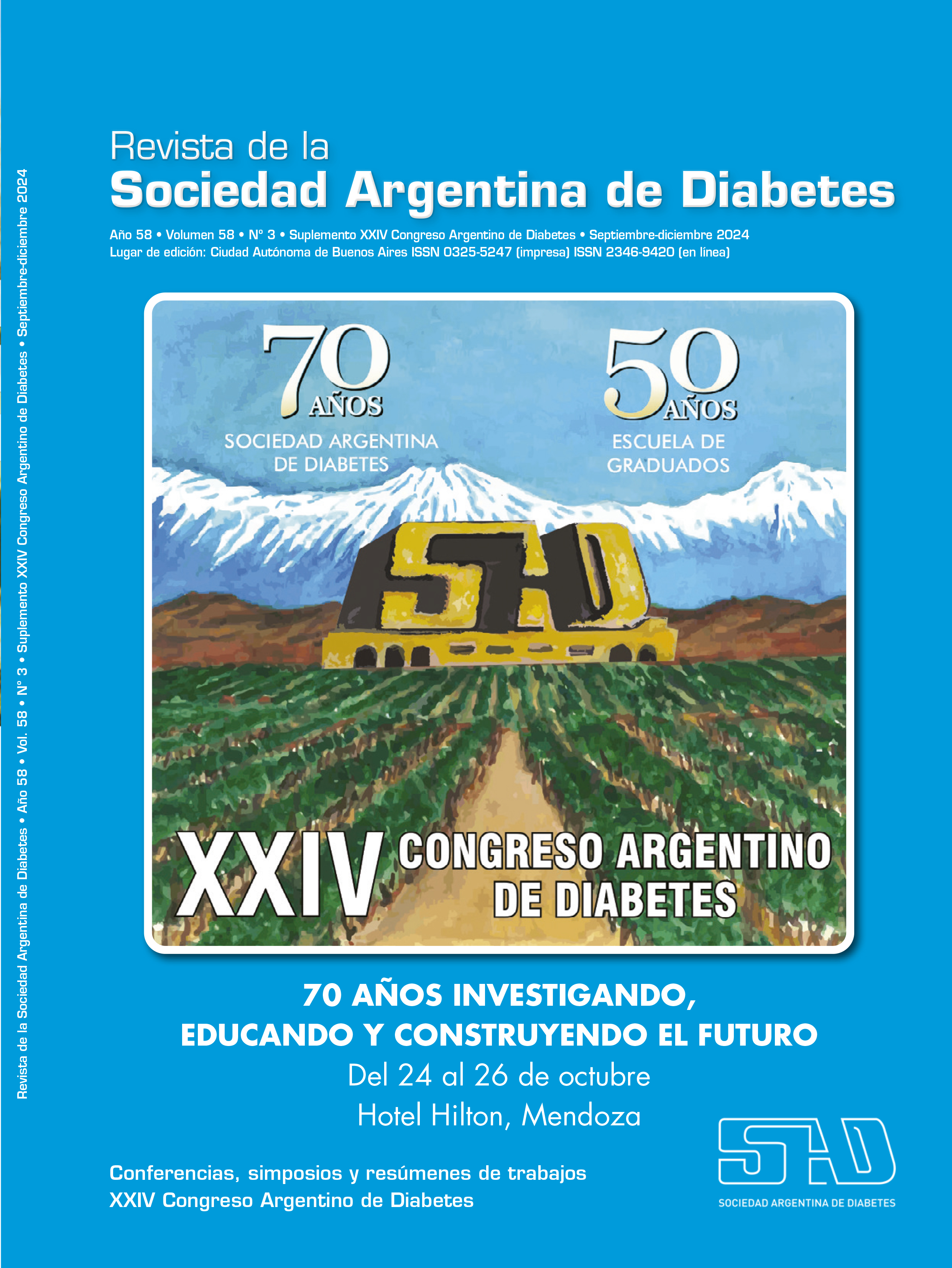Is it time to consider prediabetes and diabetes mellitus as a single entity?
Keywords:
prediabetes, diabetes type 2Abstract
To answer the question we must consider the following evidence:
- The risk of developing T2D at 7 years of follow-up increases from high normal fasting blood glucose (FBG) values between 90 - 94 vs < 85 mg/dL HR 1.49 (CI 1.23 - 1.79) p < 0.00, between 95 – 99 vs < 85 mg/dL HR 2.33 (CI 1.95 – 2.79) p < 0.00.
- A study in Mauritius defines, using ROC curves, an initial GA of 97 mg/dL for the incidence of T2D diagnosed at 5 years using OGTT and 99 mg/dL using FBG.
- Alterations in insulin secretion begin with the decline of the first peak from 90 mg/dL of FBG, becoming clearly detectable from 100 mg/dL.
- Microvascular complications begin during prediabetes (PDT2), with evidence that there is no threshold above which retinopathy (RD), nephropathy or neuropathy increases exponentially.
- Macrovascular complications begin during PDT2, there is no threshold above which cardiovascular diseases (CVD) increase exponentially; although there are studies that guide us to think that not all those who present PDT2 increase their risk of suffering from CVD, but only those who will later progress to T2D.
- In children and adolescents with FBG ≥ 100 mg/dL, generally associated with obesity, the deterioration of insulin secretion is more accelerated than in adults and is associated with increased cardio-metabolic risk. 4 Furthermore, insulin resistance begins years before the diagnosis of T2D and even PDT2, influenced by the environment, unhealthy eating habits, sedentary lifestyle, obesity, chronic low-grade inflammation, and mitochondrial dysfunction. Hyperglycemia manifests itself when the beta cell fails to maintain normal levels, this dysfunction having a clear genetic component.
Due to the above, we should not support the diagnosis of T2D on the current cut-off points, adopted on data offered by older studies, based on the presumed threshold for increased DR, this being only one of the complications present in T2D.
References
I. Nichols GA, et al. Normal fasting plasma glucose and risk of type 2 diabetes diagnosis. Am J Med. 2008 Jun;121(6):519-24.
II. Shaw JE, et al. Impaired fasting glucose: how low should it go? Diabetes Care 2000 Jan;23(1):34-9.
III. Brunzell JD, et al. Relationships between fasting plasma glucose levels and insulin secretion during intravenous glucose tolerance tests. J Clin Endocrinol Metab. 1976 Feb;42(2):222-9.
IV. Commendatore V, et al. Glucemia en ayunas alterada: ¿es oportuno utilizar el punto de corte en 100 mg/dl en Argentina? Rev Soc Arg Diab 2023; 57(1):9-19.
V. Rijkelijkhuizen JM, et al. High risk of cardiovascular mortality in individuals with impaired fasting glucose is explained by conversion to diabetes: the Hoorn study. Diabetes Care. 2007 Feb;30(2):332-6.
Downloads
Published
Issue
Section
License
Copyright (c) 2024 on behalf of the authors. Reproduction rights: Argentine Society of Diabetes

This work is licensed under a Creative Commons Attribution-NonCommercial-NoDerivatives 4.0 International License.
Dirección Nacional de Derecho de Autor, Exp. N° 5.333.129. Instituto Nacional de la Propiedad Industrial, Marca «Revista de la Sociedad Argentina de Diabetes - Asociación Civil» N° de concesión 2.605.405 y N° de disposición 1.404/13.
La Revista de la SAD está licenciada bajo Licencia Creative Commons Atribución – No Comercial – Sin Obra Derivada 4.0 Internacional.
Por otra parte, la Revista SAD permite que los autores mantengan los derechos de autor sin restricciones.




























